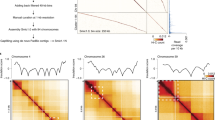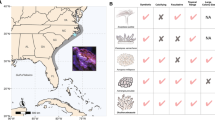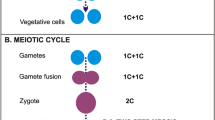Abstract
Dinoflagellates from the genus Symbiodinium form a mutualistic symbiotic relationship with reef-building corals. Here we applied massively parallel Illumina sequencing to assess genetic similarity and diversity among four phylogenetically diverse dinoflagellate clades (A, B, C and D) that are commonly associated with corals. We obtained more than 30 000 predicted genes for each Symbiodinium clade, with a majority of the aligned transcripts corresponding to sequence data sets of symbiotic dinoflagellates and <2% of sequences having bacterial or other foreign origin. We report 1053 genes, orthologous among four Symbiodinium clades, that share a high level of sequence identity to known proteins from the SwissProt (SP) database. Approximately 80% of the transcripts aligning to the 1053 SP genes were unique to Symbiodinium species and did not align to other dinoflagellates and unrelated eukaryotic transcriptomes/genomes. Six pathways were common to all four Symbiodinium clades including the phosphatidylinositol signaling system and inositol phosphate metabolism pathways. The list of Symbiodinium transcripts common to all four clades included conserved genes such as heat shock proteins (Hsp70 and Hsp90), calmodulin, actin and tubulin, several ribosomal, photosynthetic and cytochrome genes and chloroplast-based heme-containing cytochrome P450, involved in the biosynthesis of xanthophylls. Antioxidant genes, which are important in stress responses, were also preserved, as were a number of calcium-dependent and calcium/calmodulin-dependent protein kinases that may play a role in the establishment of symbiosis. Our findings disclose new knowledge about the genetic uniqueness of symbiotic dinoflagellates and provide a list of homologous genes important for the foundation of coral–algal symbiosis.
Similar content being viewed by others
Log in or create a free account to read this content
Gain free access to this article, as well as selected content from this journal and more on nature.com
or
References
Altschul SF, Gish W, Miller W, Myers EW, Lipman DJ . (1990). Basic local alignment search tool. J Mol Biol 215: 403–410.
Arnér ESJ, Holmgren A . (2000). Physiological functions of thioredoxin and thioredoxin reductase. Eur J Biochem 267: 6102–6109.
Bachvaroff TR, Place AR . (2008). From stop to start: tandem gene arrangement, copy number and Trans-splicing sites in the dinoflagellate Amphidinium carterae. PLoS One 3: e2929.
Baker AC . (2003). Flexibility and specificity in coral-algal symbiosis: diversity, ecology, and biogeography of Symbiodinium. Annu Rev Ecol Evol Syst 34: 661–689.
Bayer T, Aranda M, Sunagawa S, Yum LK, Desalvo MK, Lindquist E et al. (2012). Symbiodinium transcriptomes: genome insights into the dinoflagellate symbionts of reef-building corals. PLoS One 7: e35269.
Chen CA, Wang JT, Fang LS, Yang YW . (2005). Fluctuating algal symbiont communities in Acropora palifera (Scleractinia: Acroporidae) from Taiwan. Mar Ecol Prog Ser 295: 113–121.
Davy SK, Allemand D, Weis VM . (2012). Cell biology of cnidarian-dinoflagellate symbiosis. Microbiol Mol Biol Rev 76: 229–261.
Douglas AE . (2003). Coral bleaching—how and why? Mar Pollut Bull 46: 385–392.
Dunlap WC, Starcevic A, Baranasic D, Diminic J, Zucko J, Gacesa R et al. (2013). KEGG orthology-based annotation of the predicted proteome of Acropora digitifera: ZoophyteBase-an open access and searchable database of a coral genome. BMC Genom 14: 509.
Felsenstein J . (1989). Mathematics vs. Evolution: Mathematical Evolutionary Theory. Science 246: 941–942.
Ghavam Mostafavi P, Fatemi SMR, Shahhosseiny MH, Hoegh-Guldberg O, Loh WKW . (2007). Predominance of clade D Symbiodinium in shallow-water reef-building corals off Kish and Larak Islands (Persian Gulf, Iran). Mar Biol 153: 25–34.
Gubbels MJ, Vaishnava S, Boot N, Dubremetz JF, Striepen B . (2006). A MORN-repeat protein is a dynamic component of the Toxoplasma gondii cell division apparatus. J Cell Sci 119: 2236–2245.
Guillard RR, Ryther JH . (1962). Studies of marine planktonic diatoms. I. Cyclotella nana Hustedt, and Detonula confervacea (cleve) Gran. Can J Microbiol 8: 229–239.
Hackett JD, Anderson DM, Erdner DL, Bhattacharya D . (2004). Dinoflagellates: a remarkable evolutionary experiment. Am J Bot 91: 1523–1534.
Harper JF, Harmon A . (2005). Plants, symbiosis and parasites: a calcium signalling connection. Nat Rev Mol Cell Biol 6: 555–566.
Hoegh-Guldberg O, Mumby PJ, Hooten AJ, Steneck RS, Greenfield P, Gomez E et al. (2007). Coral reefs under rapid climate change and ocean acidification. Science 318: 1737–1742.
Howells EJ, Beltran VH, Larsen NW, Bay LK, Willis BL, Van Oppen MJH . (2012). Coral thermal tolerance shaped by local adaptation of photosymbionts. Nat Climate Change 2: 116–120.
Huang da W, Sherman BT, Lempicki RA . (2009a). Bioinformatics enrichment tools: paths toward the comprehensive functional analysis of large gene lists. Nucleic Acids Res 37: 1–13.
Huang da W, Sherman BT, Lempicki RA . (2009b). Systematic and integrative analysis of large gene lists using DAVID bioinformatics resources. Nat Protoc 4: 44–57.
Huggett J, Dheda K, Bustin S, Zumla A . (2005). Real-time RT-PCR normalisation; strategies and considerations. Genes Immun 6: 279–284.
Hughes TP, Baird AH, Bellwood DR, Card M, Connolly SR, Folke C et al. (2003). Climate change, human impacts, and the resilience of coral reefs. Science 301: 929–933.
Jeong HJ, Yoo YD, Kang NS, Lim AS, Seong KA, Lee SY et al. (2012). Heterotrophic feeding as a newly identified survival strategy of the dinoflagellate Symbiodinium. Proc Natl Acad Sci USA 109: 12604–12609.
Kim S, Bachvaroff TR, Handy SM, Delwiche CF . (2011). Dynamics of actin evolution in dinoflagellates. Mol Biol Evol 28: 1469–1480.
Ladner JT, Barshis DJ, Palumbi SR . (2012). Protein evolution in two co-occurring types of Symbiodinium: An exploration into the genetic basis of thermal tolerance in Symbiodinium clade D. BMC Evol Biol 12: 217.
LaJeunesse TC . (2002). Diversity and community structure of symbiotic dinoflagellates from Caribbean coral reefs. Mar Biol 141: 387–400.
Lee MY, Shin KH, Kim YK, Suh JY, Gu YY, Kim MR et al. (2005). Induction of thioredoxin is required for nodule development to reduce reactive oxygen species levels in soybean roots. Plant Physiol 139: 1881–1889.
Leggat W, Hoegh-Guldberg O, Dove S, Yellowlees D . (2007). Analysis of an EST library from the dinoflagellate (Symbiodinium sp.) symbiont of reef-building corals. J Phycol 43: 1010–1021.
Leggat W, Yellowlees D, Medina M . (2011). Recent progress in Symbiodinium transcriptomics. J Exp Marine Biol Ecol 408: 120–125.
Lesser MP . (2006). Oxidative stress in marine environments: biochemistry and physiological ecology. Annu Rev Physiol 68: 253–278.
Lesser MP, Shick JM . (1989). Effects of irradiance and ultraviolet radiation on photoadaptation in the zooxanthellae of Aiptasia pallida: primary production, photoinhibition, and enzymic defenses against oxygen toxicity. Mar Biol 102: 243–255.
Lesser MP, Stat M, Gates RD . (2013). The endosymbiotic dinoflagellates (Symbiodinium sp.) of corals are parasites and mutualists. Coral Reefs 32: 603–611.
Levy O, Achituv Y, Yacobi YZ, Stambler N, Dubinsky Z . (2006). The impact of spectral composition and light periodicity on the activity of two antioxidant enzymes (SOD and CAT) in the coral Favia favus. J Exp Mar Biol Ecol 328: 35–46.
Li L, Hastings JW . (1998). The structure and organization of the luciferase gene in the photosynthetic dinoflagellate Gonyaulax polyedra. Plant Mol Biol 36: 275–284.
Lidie KB, Ryan JC, Barbier M, Van Dolah FM . (2005). Gene expression in Florida red tide dinoflagellate Karenia brevis: analysis of an expressed sequence tag library and development of DNA microarray. Mar Biotechnol (NY) 7: 481–493.
Lin S . (2011). Genomic understanding of dinoflagellates. Res Microbiol 162: 551–569.
McClanahan TR . (2004). The relationship between bleaching and mortality of common corals. Mar Biol 144: 1239–1245.
McCord JM, Fridovich I . (1969). Superoxide dismutase. An enzymic function for erythrocuprein (hemocuprein). J Biol Chem 244: 6049–6055.
McGinley MP, Aschaffenburg MD, Pettay DT, Smith RT, LaJeunesse TC, Warner ME . (2012). Transcriptional response of two core photosystem genes in Symbiodinium spp. exposed to thermal stress. PLoS One 7: e50439.
Meyer E, Aglyamova GV, Wang S, Buchanan-Carter J, Abrego D, Colbourne JK et al. (2009). Sequencing and de novo analysis of a coral larval transcriptome using 454 GSFlx. BMC Genom 10: 219.
Mitra RM, Gleason CA, Edwards A, Hadfield J, Downie JA, Oldroyd GED et al. (2004). A Ca2+/calmodulin-dependent protein kinase required for symbiotic nodule development: gene identification by transcript-based cloning. Proc Natl Acad Sci USA 101: 4701–4705.
Morita M, Iguchi A, Takemura A . (2009). Roles of calmodulin and calcium/calmodulin-dependent protein kinase in flagellar motility regulation in the coral Acropora digitifera. Mar Biotechnol 11: 118–123.
Moya A, Huisman L, Ball EE, Hayward DC, Grasso LC, Chua CM et al. (2012). Whole transcriptome analysis of the coral Acropora millepora reveals complex responses to CO(2)-driven acidification during the initiation of calcification. Mol Ecol 21: 2440–2454.
Muscatine L, Pool RR, Trench RK . (1975). Symbiosis of algae and invertebrates: aspects of the symbiont surface and the host-symbiont interface. Transac Am Microscop Soc 94: 450–469.
Nagamune K, Sibley LD . (2006). Comparative genomic and phylogenetic analyses of calcium ATPases and calcium-regulated proteins in the apicomplexa. Mol Biol Evol 23: 1613–1627.
Ness RW, Siol M, Barrett SC . (2011). De novo sequence assembly and characterization of the floral transcriptome in cross- and self-fertilizing plants. BMC Genom 12: 298.
Ogawa D, Bobeszko T, Ainsworth T, Leggat W . (2013). The combined effects of temperature and CO2 lead to altered gene expression in Acropora aspera. Coral Reefs 32: 895–907.
Oldroyd GED, Harrison MJ, Paszkowski U . (2009). Reprogramming plant cells for endosymbiosis. Science 324: 753–754.
Peleg-Grossman S, Volpin H, Levine A . (2007). Root hair curling and Rhizobium infection in Medicago truncatula are mediated by phosphatidylinositide-regulated endocytosis and reactive oxygen species. J Exp Bot 58: 1637–1649.
Pochon X, Gates RD . (2010). A new Symbiodinium clade (Dinophyceae) from soritid foraminifera in Hawai'i. Mol Phylogenet Evol 56: 492–497.
Pochon X, LaJeunesse TC, Pawlowski J . (2004). Biogeographic partitioning and host specialization among foraminiferan dinoflagellate symbionts (Symbiodinium; Dinophyta). Mar Biol 146: 17–27.
Rae PM . (1976). Hydroxymethyluracil in eukaryote DNA: a natural feature of the pyrrophyta (dinoflagellates). Science 194: 1062–1064.
Rizzo PJ . (1981). Comparative aspects of basic chromatin proteins in dinoflagellates. BioSystems 14: 433–443.
Rohwer F, Seguritan V, Azam F, Knowlton N . (2002). Diversity and distribution of coral-associated bacteria. Mar Ecol Prog Ser 243: 1–10.
Rosic NN, Hoegh-Guldberg O . (2010). A method for extracting a high-quality RNA from Symbiodinium sp. J Applied Phycol 22: 139–146.
Rosic NN, Leggat W, Kaniewska P, Dove S, Hoegh-Guldberg O . (2013). New-old hemoglobin-like proteins of symbiotic dinoflagellates. Ecol Evol 3: 822–834.
Rosic NN, Pernice M, Dove S, Dunn S, Hoegh-Guldberg O . (2011a). Gene expression profiles of cytosolic heat shock proteins Hsp70 and Hsp90 from symbiotic dinoflagellates in response to thermal stress: possible implications for coral bleaching. Cell Stress Chaperones 16: 69–80.
Rosic NN, Pernice M, Rodriguez-Lanetty M, Hoegh-Guldberg O . (2011b). Validation of housekeeping genes for gene expression studies in Symbiodinium exposed to thermal and light stress. Mar Biotechnol (NY) 13: 355–365.
Rowan R . (1998). Diversity and ecology of zooxanthellae on coral reefs. J Phycol 34: 407–417.
Rowan R . (2004). Coral bleaching: thermal adaptation in reef coral symbionts. Nature 430: 742.
Rowan R, Whitney SM, Fowler A, Yellowlees D . (1996). Rubisco in marine symbiotic dinoflagellates: form II enzymes in eukaryotic oxygenic phototrophs encoded by a nuclear multigene family. Plant Cell 8: 539–553.
Royer WE Jr, Zhu H, Gorr TA, Flores JF, Knapp JE . (2005). Allosteric hemoglobin assembly: diversity and similarity. J Biol Chem 280: 27477–27480.
Santos SR, Taylor DJ, Coffroth MA . (2001). Genetic comparisons of freshly isolated versus cultured symbiotic dinoflagellates: Implications for extrapolating to the intact symbiosis. J Phycol 37: 900–912.
Santos SR, Taylor DJ, Kinzie Iii RA, Hidaka M, Sakai K, Coffroth MA . (2002). Molecular phylogeny of symbiotic dinoflagellates inferred from partial chloroplast large subunit (23S)-rDNA sequences. Mol Phylogenet Evol 23: 97–111.
Schulz MH, Zerbino DR, Vingron M, Birney E . (2012). Oases: robust de novo RNA-seq assembly across the dynamic range of expression levels. Bioinformatics 28: 1086–1092.
Shimada H, Koizumi M, Kuroki K, Mochizuki M, Fujimoto H, Ohta H et al. (2004). ARC3, a chloroplast division factor, is a chimera of prokaryotic FtsZ and part of eukaryotic phosphatidylinositol-4-phosphate 5-kinase. Plant Cell Physiol 45: 960–967.
Shinzato C, Shoguchi E, Kawashima T, Hamada M, Hisata K, Tanaka M et al. (2011). Using the Acropora digitifera genome to understand coral responses to environmental change. Nature 476: 320–323.
Shoguchi E, Shinzato C, Kawashima T, Gyoja F, Mungpakdee S, Koyanagi R et al. (2013). Draft assembly of the Symbiodinium minutum nuclear genome reveals dinoflagellate gene structure. Curr Biol 23: 1399–1408.
Sorek M, Levy O . (2012). Influence of the quantity and quality of light on photosynthetic periodicity in coral endosymbiotic Algae. PLoS One 7: e43264.
Sørensen JG, Kristensen TN, Loeschcke V . (2003). The evolutionary and ecological role of heat shock proteins. Ecol Lett 6: 1025–1037.
Sturzenbaum SR, Kille P . (2001). Control genes in quantitative molecular biological techniques: the variability of invariance. Comp Biochem Physiol B Biochem Mol Biol 130: 281–289.
Swulius MT, Waxham MN . (2008). Ca(2+)/calmodulin-dependent protein kinases. Cell Mol Life Sci 65: 2637–2657.
Takeshima H, Komazaki S, Nishi M, Iino M, Kangawa K . (2000). Junctophilins: a novel family of junctional membrane complex proteins. Mol Cell 6: 11–22.
Telford MJ . (2007). Phylogenomics. Curr Biol 17: R945–R946.
Thornhill DJ, Lewis AM, Wham DC, Lajeunesse TC . (2013). Host-specialist lineages dominate the adaptive radiation of reef coral endosymbionts. Evolution 68: 352–367.
Tonk L, Bongaerts P, Sampayo EM, Hoegh-Guldberg O . (2013). SymbioGBR: a web-based database of Symbiodinium associated with cnidarian hosts on the Great Barrier Reef. BMC Ecol 13: 7.
Trench RK . (1979). The cell biology of plant-animal symbiosis. Annu Rev Plant Physiol 30: 485–531.
Voolstra CR, Sunagawa S, Schwarz JA, Coffroth MA, Yellowlees D, Leggat W et al. (2009). Evolutionary analysis of orthologous cDNA sequences from cultured and symbiotic dinoflagellate symbionts of reef-building corals (Dinophyceae: Symbiodinium). Comp Biochem Physiol Part D Genomics Proteomics 4: 67–74.
Weber MX, Medina M . (2012). The role of microalgal symbionts (Symbiodinium) in holobiont physiology. Adv Bot Res 64: 119–140.
Weis VM . (2008). Cellular mechanisms of Cnidarian bleaching: stress causes the collapse of symbiosis. J Exp Biol 211: 3059–3066.
Wisecaver JH, Brosnahan ML, Hackett JD . (2013). Horizontal gene transfer is a significant driver of gene innovation in dinoflagellates. Genome Biol Evol 5: 2368–2381.
Wisecaver JH, Hackett JD . (2011). Dinoflagellate genome evolution. Annu Rev Microbiol 65: 369–387.
Zerbino DR, Birney E . (2008). Velvet: algorithms for de novo short read assembly using de Bruijn graphs. Genome Res 18: 821–829.
Zhang H, Hou Y, Miranda L, Campbell DA, Sturm NR, Gaasterland T et al. (2007). Spliced leader RNA trans-splicing in dinoflagellates. Proc Natl Acad Sci USA 104: 4618–4623.
Zhang S, Sui Z, Chang L, Kang K, Ma J, Kong F et al. (2014). Transcriptome de novo assembly sequencing and analysis of the toxic dinoflagellate Alexandrium catenella using the Illumina platform. Gene 537: 285–293.
Acknowledgements
This work was supported by a University of Queensland Postdoctoral Fellowship for Women and a Discovery Early Career Researcher Award (DE120101412) to NNR, as well as the ARC Centre of Excellence for Coral Reef Studies (CE0561435) (www.coralcoe.org.au). We also acknowledge funding support from the Australian Research Council (Project LP0989200).
Author information
Authors and Affiliations
Corresponding author
Ethics declarations
Competing interests
The authors declare no conflict of interest.
Additional information
Supplementary Information accompanies this paper on The ISME Journal website
Supplementary information
Rights and permissions
About this article
Cite this article
Rosic, N., Ling, E., Chan, CK. et al. Unfolding the secrets of coral–algal symbiosis. ISME J 9, 844–856 (2015). https://doi.org/10.1038/ismej.2014.182
Received:
Revised:
Accepted:
Published:
Issue date:
DOI: https://doi.org/10.1038/ismej.2014.182
This article is cited by
-
Host transcriptomic plasticity and photosymbiotic fidelity underpin Pocillopora acclimatization across thermal regimes in the Pacific Ocean
Nature Communications (2023)
-
Micronutrient content drives elementome variability amongst the Symbiodiniaceae
BMC Plant Biology (2022)
-
Symbiotic dinoflagellates of the giant clam, Tridacna squamosa, express an extracellular alpha carbonic anhydrase associated with the plasma membrane to promote HCO3− dehydration and CO2 uptake during illumination
Coral Reefs (2022)
-
Photosynthesis acclimation under severely fluctuating light conditions allows faster growth of diatoms compared with dinoflagellates
BMC Plant Biology (2021)
-
Using form II ribulose-1,5-bisphosphate carboxylase/oxygenase to estimate the phototrophic potentials of Symbiodinium, Cladocopium and Durusdinium in various organs of the fluted giant clam, Tridacna squamosa, and to evaluate their responses to light upon isolation from the host
Coral Reefs (2021)



